
 |
|
Welcome to the Bananas.org forums. You're currently viewing our message boards as a guest which gives you limited access to participate in discussions and access our other features such as our wiki and photo gallery. By joining our community, you'll have access to post topics, communicate privately with other members (PM), respond to polls, upload photos, and access many other special features. Registration is fast and simple, so please join our community today! If you have any problems with the registration process or your account login, please contact us. |
|
|||||||
| Register | Photo Gallery | Classifieds | Wiki | Chat | Map | Today's Posts | Search |
| Main Banana Discussion This is where we discuss our banana collections; tips on growing bananas, tips on harvesting bananas, sharing our banana photos and stories. |
|
Hey there! It looks like you're enjoying Bananas.org but haven't created an account yet. Why not take a minute to register for your own account now? As a member you get access to all of our forums and posts plus the ability to post your own messages, communicate directly with other members and much more. Register now! Already a member? Login at the top of this page to stop seeing this message. |
 Members currently in the chatroom: 0
Members currently in the chatroom: 0
|
|
 |
The most chatters online in one day was 17, 09-06-2009. No one is currently using the chat. |

 Email this Page Email this Page
|
|
|
LinkBack | Thread Tools |
|
|
#21 (permalink) | |
|
Zone: 9b
Join Date: May 2014
Posts: 235
BananaBucks
: 78,820
Feedback: 4 / 100%
Said "Thanks" 647 Times
Was
Thanked 1,032 Times in 218 Posts
Said "Welcome to Bananas" 0 Times
|
Quote:
Also, Pisang Ceylon seems to grow even in temps. in the high 60's, whereas all other cultivars so far seem to almost stop growing when it's that cold. Now that I actually have that Thai restaurant namwah (new cultivar name, LOL), it'll be interesting to compare it to Ice Cream. My ice cream definitely stops growing when it's cold, and won't move an inch until day temps are 70F or above. I'm curious to see if there is any relation between a cultivar's ability to grow when it's cold and it's ability to survive freezing temps. If there is any relation, it would be a slightly more objective way of judging cold hardiness.. |
|
|
|


|
| Said thanks: |
|
|
#22 (permalink) |
|
Zone: 9b
Join Date: May 2014
Posts: 235
BananaBucks
: 78,820
Feedback: 4 / 100%
Said "Thanks" 647 Times
Was
Thanked 1,032 Times in 218 Posts
Said "Welcome to Bananas" 0 Times
|
Some new updates! turns out, if you leave them to ripen on the plant, the peels will split, so it's best to harvest them once you start seeing a finger or two turn yellow. Flavorwise, it's exactly the same mentioned in the beginning in this thread: absolutely AMAZING!!!! Upon reflection, I don't think you'll always see black spots on the peel at peak ripeness, I think it depends if the banana had some blemishes to begin with. Those spots become more pronounced as the peel senesces. It seemed like there was one finger that had no spots whatsoever and when it was eaten, it was like being in banana heaven!
Some new photos of American Goldfinger, taken 8/5/17. See those 4 dark yellow fingers in the foreground? They're absolutely at the perfect stage! The finger in the background that's starting to turn yellow...that still needs approx. 2-4 days in my conditions before eating: 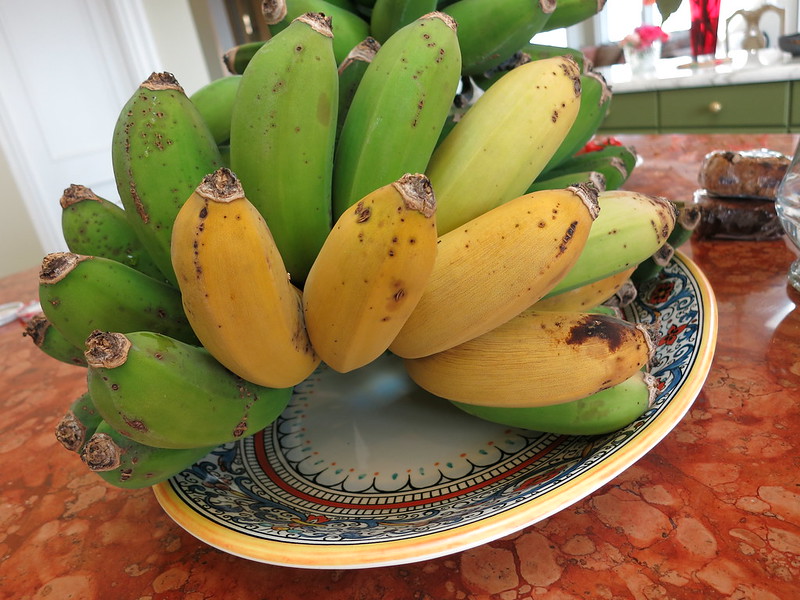 They definitely started to split, but in my family, these bananas get devoured before they have a chance to go bad: 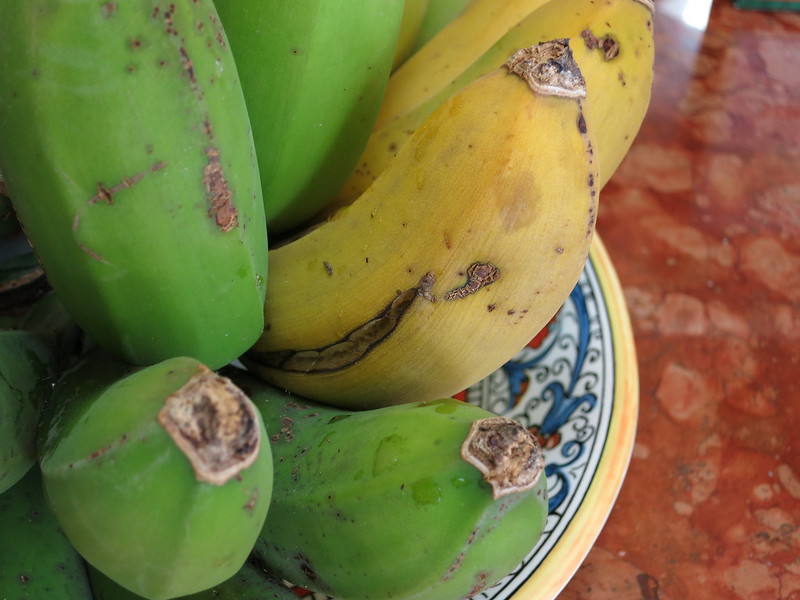 This was taken literally minutes after harvesting. Looking back, it's best to not let so many fingers ripen to avoid the skin from splitting: 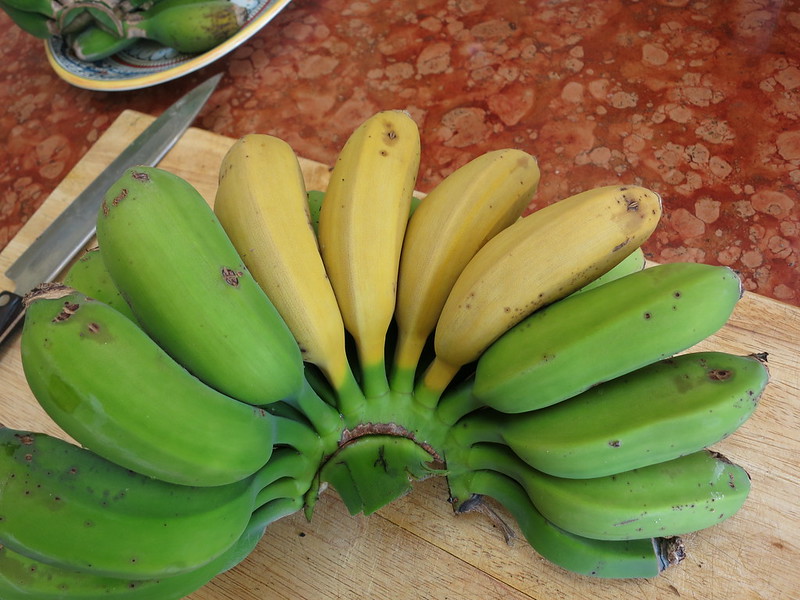 Significantly bigger fingers this time around, but only the first had had very full, plump bananas. Some hands just didn't fill in (see hands in the background) because of the cold killing off the leaves, poor, suboptimal weather for bananas, etc. I'm curious to see if the ones that didn't fill in taste the same or not as good as the ones completely filled in, to be continued: 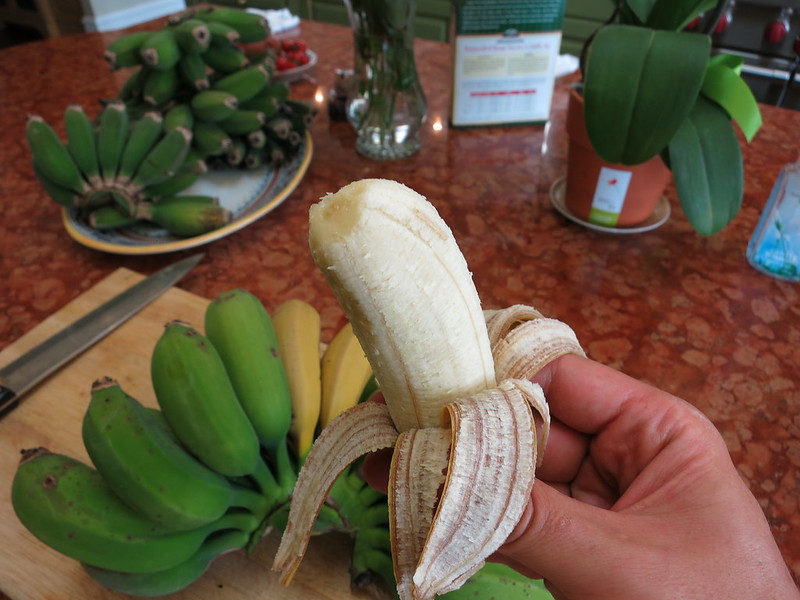 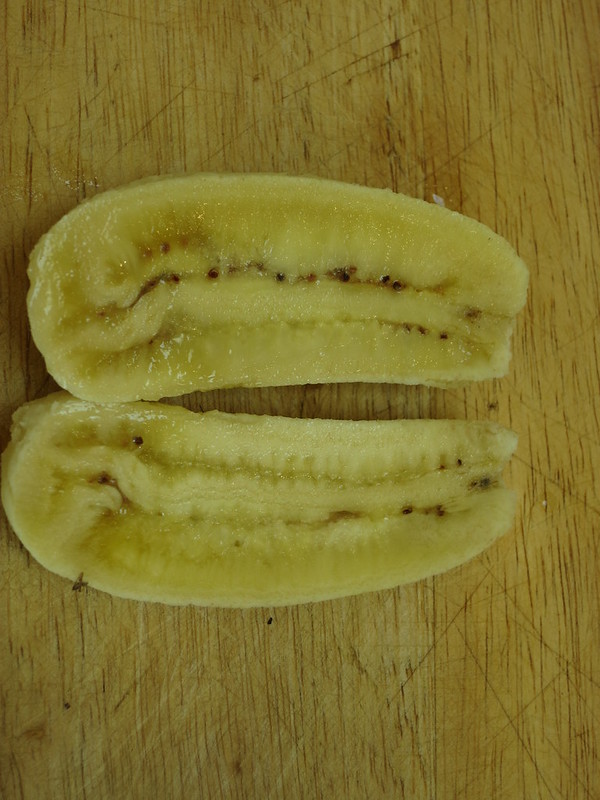 |
|
|


|
| Said thanks: |
|
|
#23 (permalink) |
|
banana cereal killer
Location: middleburg fl.
Zone: 9b-8a
Name: walkinbeam
Join Date: Sep 2016
Posts: 2,445
BananaBucks
: 12,249
Feedback: 0 / 0%
Said "Thanks" 10,889 Times
Was
Thanked 3,384 Times in 1,553 Posts
Said "Welcome to Bananas" 816 Times
|
excellent. thank you just bought one.
__________________
................................................... npk of wood ash 0/1/3 to 0/3/7 npk of banana leaf ash 1.75/0.75/0.5 |
|
|


|
| Said thanks: |
|
|
#24 (permalink) | |
|
Eddie M
Location: Lake Elsinore, California
Zone: 9b
Name: Eddie M
Join Date: Jul 2013
Posts: 276
BananaBucks
: 73,085
Feedback: 1 / 100%
Said "Thanks" 324 Times
Was
Thanked 204 Times in 97 Posts
Said "Welcome to Bananas" 1 Times
|
Quote:
Hi, Where in northern California are you located? Eddie |
|
|
|


|
|
|
#25 (permalink) |
|
Zone: 9b
Join Date: May 2014
Posts: 235
BananaBucks
: 78,820
Feedback: 4 / 100%
Said "Thanks" 647 Times
Was
Thanked 1,032 Times in 218 Posts
Said "Welcome to Bananas" 0 Times
|
Hi Eddie,
I'm about a 30 minute drive south of San Francisco, CA. This year, my climate has been a bit less than ideal for bananas: we had a cool spring and many weeks of cold summers followed by a few heat waves here and there. Overall, the FHIA-1 isn't thriving like it did a few years ago, but it's still producing several bunches. In fact, it produces bunch after bunch after bunch, but if the timing is off (ie. the blooms open in September thru April), those bunches don't make it to maturity. There's really a small window by which the bananas will successfully mature, and that also depends on the weather during any given year. 30 minutes south of where I am in San Jose, CA, FHIA 1 would probably be my top choice because it's warm enough there that you can probably get more bunches to mature. Now that I've grown several varieties here for a while, I'd much rather choose pisang ceylon over FHIA-1 under these cool conditions: it still grows decently fast with marginal weather, and the flavor is arguably as good if not better! Pisang Ceylon fruits so much faster too: about 5 months from bloom to harvest. this means there's a higher chance that every bunch that forms will reach maturity and not get taken out by the cold weather. Only downside is that the pseudostems almost always fall over without propping, and they get really, really tall...FHIA 1 can also get very, very tall, but the pstems almost never fall over. |
|
|


|
|
|
#26 (permalink) | |
|
Eddie M
Location: Lake Elsinore, California
Zone: 9b
Name: Eddie M
Join Date: Jul 2013
Posts: 276
BananaBucks
: 73,085
Feedback: 1 / 100%
Said "Thanks" 324 Times
Was
Thanked 204 Times in 97 Posts
Said "Welcome to Bananas" 1 Times
|
Quote:
That is really amazing. I am moving to Vista, California. Do you recall if young Fhia-1 pups have wine colored markings on their leaves. I have several varieties, I want to eventually end up with about 4. I haven't ever tried using ceylon. Thanks again. Eddie Munoz |
|
|
|


|
| Said thanks: |
|
|
#27 (permalink) |
|
Join Date: Mar 2018
Posts: 18
BananaBucks
: 11,915
Feedback: 0 / 0%
Said "Thanks" 13 Times
Was
Thanked 20 Times in 11 Posts
Said "Welcome to Bananas" 0 Times
|
Hey Meizzwang
I've really appreciated your posts on here about growing in N California. I live in a very similar climate in southern Australia. After growing bananas for many years now, would you say pisang Ceylon is the best performer consistently? Did you ever get that namwah to fruit that matured a bunch in 4 months? |
|
|


|
| Said thanks: |
|
|
#28 (permalink) |
|
Join Date: Dec 2020
Posts: 1
BananaBucks
: 259
Feedback: 0 / 0%
Said "Thanks" 0 Times
Was
Thanked 0 Times in 0 Posts
Said "Welcome to Bananas" 0 Times
|
Thank you for beautiful photos!! So, what is the 10 out of 10 taste-wise?
|
|
|


|

 Email this Page Email this Page
|
| Currently Active Users Viewing This Thread: 1 (0 members and 1 guests) | |
|
|
 Similar Threads
Similar Threads
|
||||
| Thread | Thread Starter | Forum | Replies | Last Post |
| FHIA-17 Taste Report | robguz24 | Main Banana Discussion | 0 | 10-06-2016 04:35 PM |
| First FHIA 1 Goldfinger (American) bloom | Tytaylor77 | Main Banana Discussion | 24 | 06-08-2016 06:59 AM |
| FHIA-03 Sweetheart Taste Report | robguz24 | Main Banana Discussion | 5 | 07-27-2015 01:34 PM |
| FHIA-01 Goldfinger taste report | robguz24 | Main Banana Discussion | 4 | 03-12-2015 09:05 PM |
| Goldfinger Taste Report | servatusprime | Main Banana Discussion | 16 | 10-20-2014 02:52 PM |